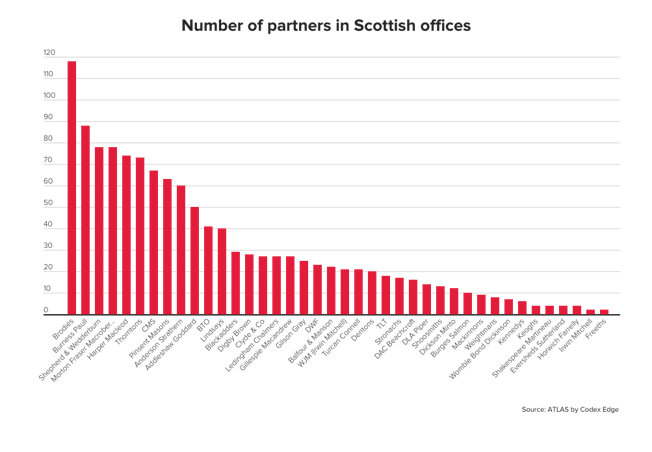Last month’s appeal in the highly-publicised legal action by Taylor Thomson and the venerable auction house Christie’s has been dubbed in these pages as this year’s “clash of the litigation titans”. Old rivals Anthony Grabiner QC of One Essex Court and Brick Court’s Jonathan Sumption QC, two long-standing members of the bar’s ‘£1m-a-year club’, face each other in the Court of Appeal in a dispute over a pair of fake Louis XV vases sold to art dealer Taylor Thomson by auctioneers Christie’s.
“The sums in dispute aren’t colossal, but the case seems to have taken on a real life of its own – both sides are set to fight it and we’re ready to bring out the top guns to do so,” says Herbert Smith head of litigation David Gold.
To be strictly accurate, the sums are not that small either – Thomson bought her urns in 1994 for £1,957,388 on the strength of a catalogue description that Mr Justice Jack, in a judgment attacked by both sides, described last year as “inflated”. Neither side is likely to back down. Thomson is the only daughter of Canadian media billionaire Lord Thomson of Fleet and Christie’s is unsurprisingly hyper-sensitive about allegations of impropriety following the scandal that ensued in 2000 when, together with Sotheby’s, it was accused of illegal collusion over commission fees charged to clients. Christie’s was found to be liable to Thomson on two counts – on negligence for breach of its common law duty of care and also on misrepresentation. Damages still have to be assessed.
“When I asked Christie’s for my money back, they said, ‘get a lawyer’, so I did,” Thomson told the UK press last year. In fact, she went to her Los Angeles-based lawyer Bert Fields, one of the most prominent entertainment lawyers in the US whose client list has included Tom Cruise, Michael Jackson, Kevin Costner and the Beatles. He recommended Herbert Smith.
Reynolds Porter Chamberlain has acted for the auction house since the 1960s. According to partner Rupert Boswall, who has been advising Christie’s for 10 years and has been handling this action from the start, they were “disappointed and surprised” at last year’s ruling. “The two arguments that Taylor Thomson ran we actually won on in the judgment,” he says. First, she had argued that the urns were nineteenth century and Judge Jack found them to be eighteenth century and, second, he found that Christie’s had been competent in their cataloguing skills. “It was strange to win on the merits of the case at trial and yet lose in the judgment,” he says. “One of the main planks of the appeal we want to advance is that if the judge found the urn was 70 per cent likely to be eighteenth century, as he said, then on the balance of probabilities, it was eighteenth century and that’s that.”
Thomson’s team were also unhappy with the judgment and have counter-appealed. Gold says: “Although Mr Justice Jack concluded the vases were 70 per cent likely to be eighteenth century, he also found the catalogue was accurate when it said unconditionally, without qualification, that they were eighteenth century. He ended up in this strange position where he said there was a special duty owed to Taylor Thomson because of the special relationship where they should have warned her there were issues regarding the urns, but they had no such duty to raise that possibility when dealing with the public. I find that intellectually unacceptable and you can’t have it both ways.”
According to Gold, Judge Jack appeared to “fall in love with the case” and “spent hours looking at the vases with a magnifying glass”. “Maybe he got rather too enthusiastic,” he adds.
For City lawyers the appeal will be a rare opportunity to size up two of the bar’s elite. As The Lawyer revealed last year, Lord Grabiner was top earner at the bar, on target to make as much as £3m in 2004 and charging as much as £3,000 an hour. Meanwhile, Jonathan Sumption was one of a small clutch of silks set to earn £2m a year. “They have a go at each other in court, but in the politest way,” one barrister confides.
Christie’s originally in-structed Andrew Onslow of 3 Verulam Buildings, who took silk during the course of the action, and when the case went to appeal the barrister recommended Sumption, whom the previous year had a starring role in the Hutton Inquiry acting for the Government, but to mixed reviews. One columnist labelled him “the Iain Duncan Smith of the legal world, unable to land a fist on his opponent, the BBC’s Andrew Gilligan”. But as Boswall puts it: “He’s a master at simplifying an involved scenario to make the correct answer absolutely painfully clear.”
There is a last minute surprise for the Christie’s camp as Thomson has just instructed a second leading counsel to join Lord Grabiner, David Kitchin QC of 8 New Square, a patent lawyer who is particularly hot on technical details to do with the aging of the vase.
And why did they opt for Lord Grabiner? Robert Miles QC of 4 Stone Buildings, who also took silk during the Christie’s case, led in last year’s trial. “We knew Sumption was instructed and although there was no reason why Robert couldn’t have dealt with the case, for a relatively new silk to be up against Sumption, to me, might perhaps have been a step too far. Robert was also very committed on another of our cases [Equitable Life v Ernst & Young],” says Gold. “But also, Grabiner was really the natural choice and the right person for us to turn to. He’s a fighter – nothing gets left out.”





























